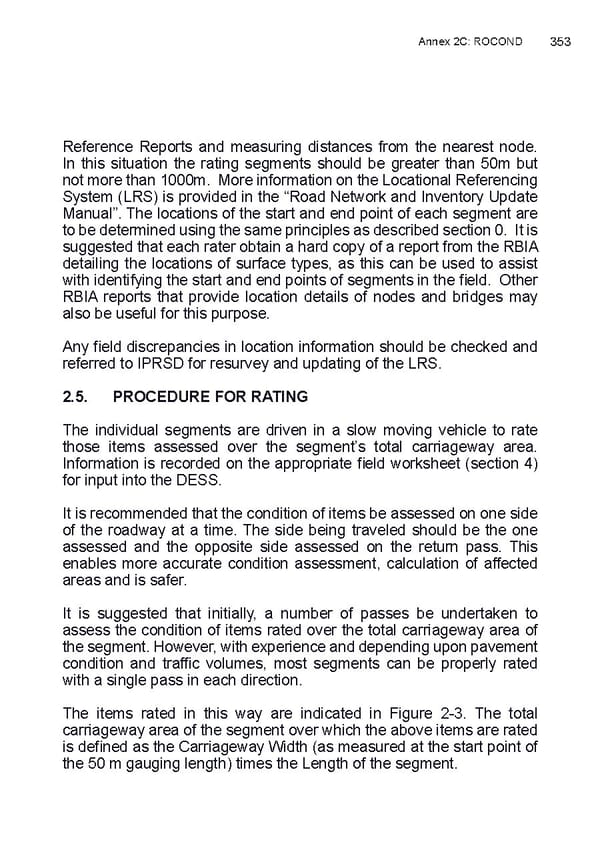Annex 2C: ROCOND 353 Reference Reports and measuring distances from the nearest node. In this situation the rating segments should be greater than 50m but not more than 1000m. More information on the Locational Referencing System (LRS) is provided in the “Road Network and Inventory Update Manual”. The locations of the start and end point of each segment are to be determined using the same principles as described section 0. It is suggested that each rater obtain a hard copy of a report from the RBIA detailing the locations of surface types, as this can be used to assist with identifying the start and end points of segments in the field. Other RBIA reports that provide location details of nodes and bridges may also be useful for this purpose. Any field discrepancies in location information should be checked and referred to IPRSD for resurvey and updating of the LRS. 2.5. PROCEDURE FOR RATING The individual segments are driven in a slow moving vehicle to rate those items assessed over the segment’s total carriageway area. Information is recorded on the appropriate field worksheet (section 4) for input into the DESS. It is recommended that the condition of items be assessed on one side of the roadway at a time. The side being traveled should be the one assessed and the opposite side assessed on the return pass. This enables more accurate condition assessment, calculation of affected areas and is safer. It is suggested that initially, a number of passes be undertaken to assess the condition of items rated over the total carriageway area of the segment. However, with experience and depending upon pavement condition and traffic volumes, most segments can be properly rated with a single pass in each direction. The items rated in this way are indicated in Figure 2-3. The total carriageway area of the segment over which the above items are rated is defined as the Carriageway Width (as measured at the start point of the 50 m gauging length) times the Length of the segment.
 Local Road Management Manual Page 353 Page 355
Local Road Management Manual Page 353 Page 355